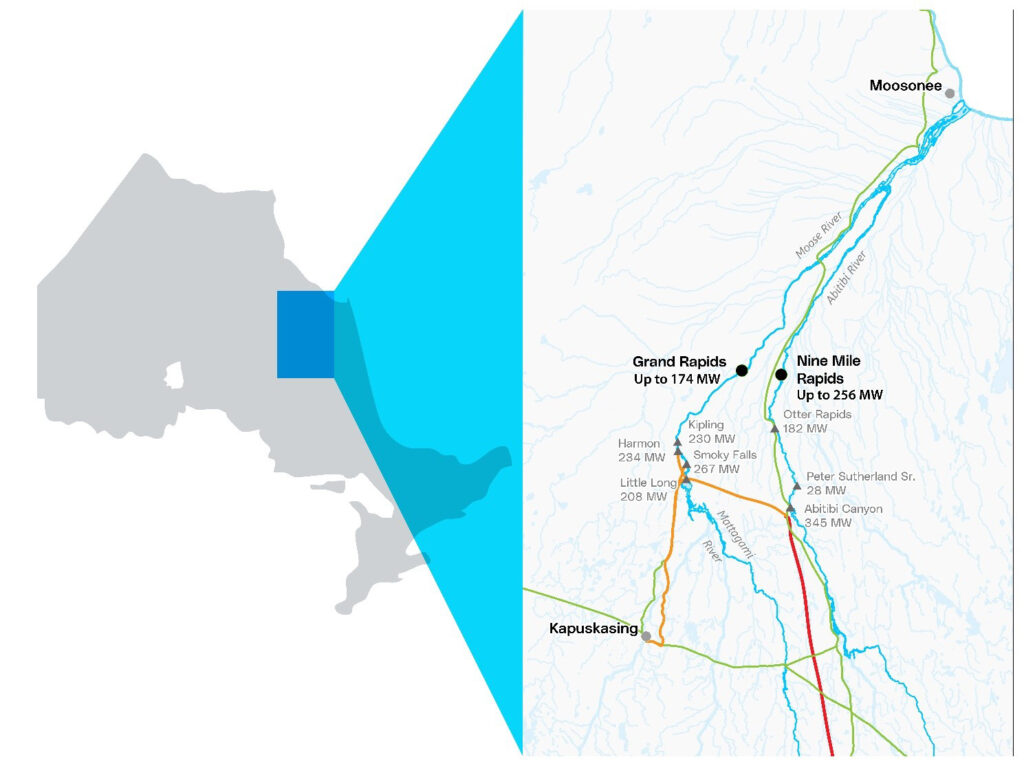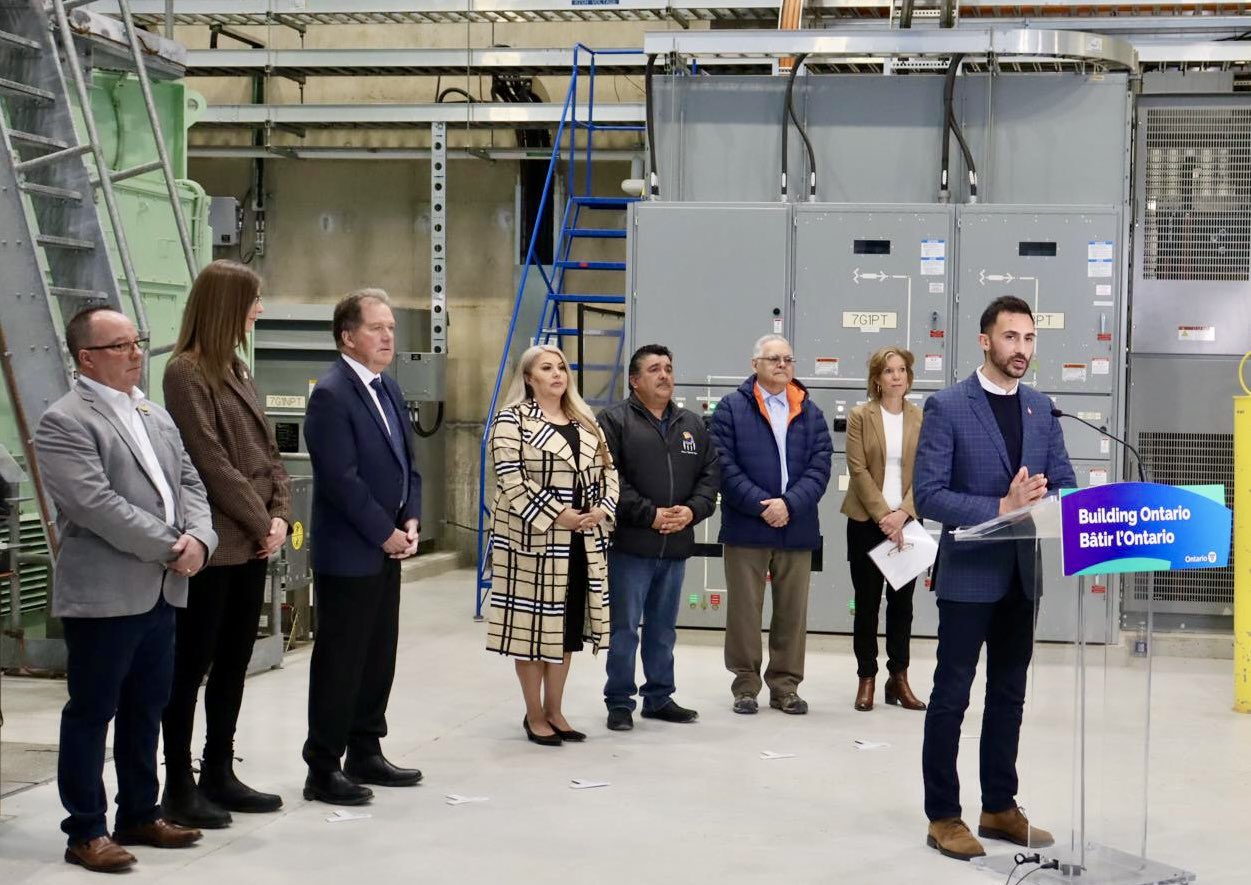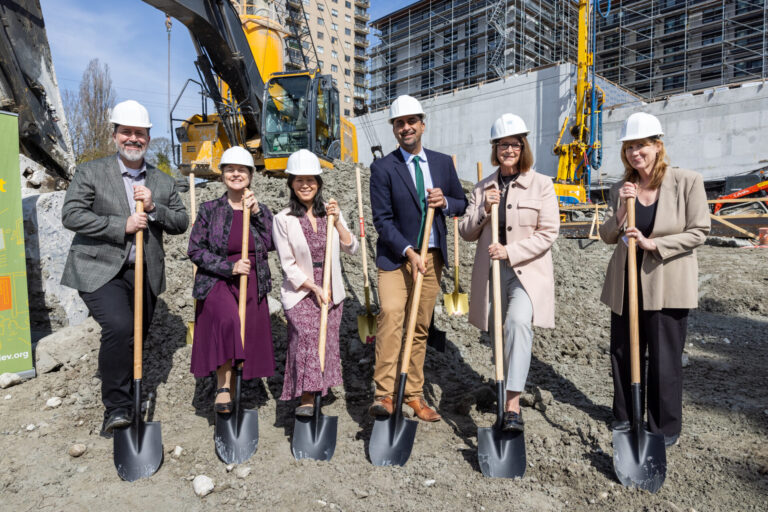The Government of Ontario announced plans to partner with Taykwa Tagamou Nation (TTN) and Moose Cree First Nation (MCFN) to expand hydroelectric generation to meet growing energy demand and support greater economic self-determination and prosperity.
“For more than a century, nearly a quarter of Ontario’s power has come from clean hydroelectric energy,” said Stephen Lecce, Minister of Energy and Mines. “As energy demand rises in Ontario, especially in the North, our government is taking action by supporting early development work for the provinces first expansion of large-scale hydroelectricity in decades. By working together in the face of unjustified attacks from President Trump, Ontario will generate all the affordable electricity we need within our own borders, now and well into the future. We are proud to work with Taykwa Tagamou Nation and Moose Cree First Nation to invest in new hydropower, while creating good jobs and affordable 24/7 power for families and businesses.”
TTN and MCFN will lead co-planning, working alongside the government and Ontario Power Generation (OPG), to explore and advance opportunities for two new hydroelectric generation stations which, if approved, could produce up to 430 megawatts (MW) of affordable, reliable, and clean electricity – enough to power 430,000 homes. This includes the proposed Nine Mile Rapids Generating Station, which could generate about 256 MW of electricity, and the proposed Grand Rapids Generating Station, which could generate about 174 MW of electricity. This work, which would represent the first net-new hydroelectric station(s) in Ontario in 10 years, is an important part of Ontario’s plan to meet the growing demand for electricity in Northern Ontario, which according to Ontario’s Independent Electricity System Operator (IESO), is forecasted to increase by 81 per cent by 2050.
“This co-planning process represents a new approach—one that puts First Nations in the driver’s seat from the beginning,” said Chief Bruce Archibald of Taykwa Tagamou Nation. “True economic reconciliation means that we are not just participating in development. We’re shaping it, on our terms, for the benefit of our communities while supporting the province’s work to meet rising demand for electricity.”
To support early exploration and development, TTN and MCFN have signed Letters of Intent with OPG as all parties work together on preliminary planning activities, including field studies, to inform a community-led decision-making process on hydroelectric development.
“Moose Cree First Nation supports our work with Taykwa Tagamou Nation and the Co-Planning Committee to explore potential future water-power development within the Moose River Basin,” said Chief Peter Wesley of Moose Cree First Nation. “This collaborative effort aims to meet the power needs of Ontario while respecting the interests of both communities and building upon our partnership with OPG on the Lower Mattagami River Project. We will develop a streamlined process for hydro development, ensuring environmental impacts are evaluated and understood by our community members in addition to the benefits these projects will bring in terms of jobs and long-term revenue.”
New large-scale hydroelectric generating stations would build on existing investments by the province and OPG to refurbish and expand existing hydro stations in Northern Ontario, Niagara Region, Cornwall and Eastern Ontario. With an investment of $4.7 billion, the refurbishments and expansion of the existing stations will secure more than 5,000 megawatts of clean electricity and support over 2,000 good-paying jobs, with more expected from two new potential stations.
“This tremendous opportunity with Taykwa Tagamou Nation and Moose Cree First Nation is proof positive of our government’s commitment to building meaningful community and economic partnerships in the spirit of reconciliation,” said Greg Rickford, Minister of Indigenous Affairs and First Nations Economic Reconciliation, and the Minister Responsible for Ring of Fire Economic and Community Partnerships. “By working hand-in-hand with First Nations leaders and their communities, we are not only ensuring a sustainable energy future for Ontario, but also advancing economic self-determination and creating good-paying, local jobs. Together, we are fostering a future that promotes economic prosperity, and strengthens Ontario’s energy resilience.”

“This is an exciting moment for Timmins, as these large-scale hydroelectric generation stations will provide a reliable source of electricity for Northeastern Ontario and beyond,” said George Pirie, Member of Provincial Parliament for Timmins. “Our community serves as a vital hub for resource development and economic activity, and as we continue to grow, establishing a clean energy source for future development will benefit the North and all of Ontario”.
“We are committed to advancing new hydropower in partnership with Indigenous communities. Working together with TTN and MCFN to advance these projects is an opportunity to help meet growing electricity demand and engage in meaningful partnerships and mutually beneficial relationships with Indigenous Peoples and communities.” said Heather Ferguson, senior vice president, Business Development & Corporate Affairs, OPG.
Featured image: (Government of Ontario)











